By David Lake
The Metallurgy of a Blade
This is a discussion for the ages… which steel makes the best knife?
If only there were one simple answer. It all depends on the burden of intended use, actual use, the frequency of use, and potential abuse one puts on a knife. As a basis for the argument, one must first identify the primary use of a knife. Then consider cost. Then maybe, future investment value as many high-end and custom blades appreciate better than most publicly traded stocks and commodities.
Let’s divide the field down the middle- a knife will either be used in a professional capacity or as casual every day carry, (EDC). The professional knife will be taken to task in the course of one’s job or duty. Or maybe remove a seatbelt from a victim of a motor vehicle accident. The professional knife may even see real violence if deployed in close hand-to-hand combat. The professional knife may very well be counted on to protect life, limb and freedom. Or maybe just to skin and dress wild game. The EDC knife, for casual daily carry, may be used to cut packaging or portion food, or may only ever be used as a letter opener. Though, at times the EDC pocket knife could be deployed to protect life and limb from an evil-doer. So the EDC knife may actually get to save the day.
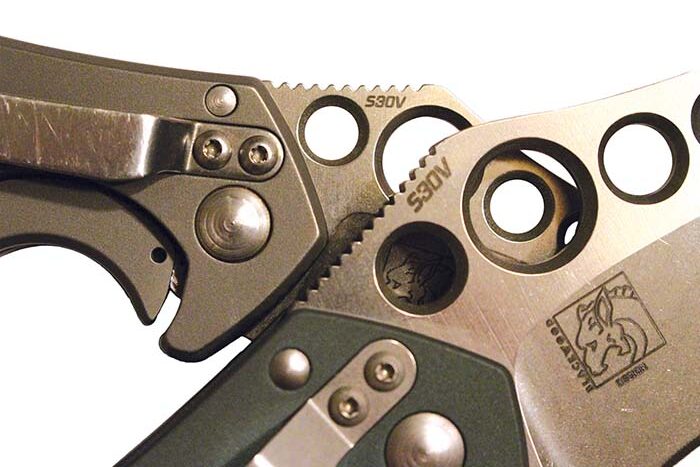
The demands on one knife will never quite be the same as another. We can certainly make sound suppositions about what’s best. Modern technology has lent itself well to the advance of metallurgy to expand steel’s range of abilities. As diverse as modern steel selection is, they’re all very, very good materials. No steel of reputable pedigree should totally and completely disappoint. So even with the wide range of choice, most of our knife steels today will in fact perform satisfactorily, most of the time. Only when pushed to extreme limits will steel ever expose its shortcomings or strengths.
The steels listed and compared here all fall into the categories of Stainless, Carbon, or Tool steel. Stainless steel contains at least 13% chromium in the alloy content, and thus resists corrosion, but may sacrifice toughness at the lower end of the price scale. Tool steel can be very hard and offers the best in edge retention, but may sacrifice corrosion resistance and is more difficult (thus expensive) to craft. Carbon steel is tough, resilient, and easy to work with, but may totally give up on corrosion resistance.

Steel’s performance characteristics can be clearly defined, categorized and compared. Here on these pages are some terrific graphs from www.bestpocketknifetoday.com that display these characteristics in an orderly fashion. We thank Matt Davidson for his contribution to this issue and encourage our readers to visit his website. Edge retention, corrosion resistance, and material hardness are the most important factors in blade steel selection. First and foremost, a knife must cut. According to most serious enthusiasts, corrosion resistance can take a back seat to cutting power. Hardness, toughness, and edge make up the trifecta of a blade’s utility. A blade made from very hard steel is more expensive as it is more difficult to craft, and will be difficult to sharpen. In the case of economically priced blades, one that is easy to sharpen will be equally easy to dull; the compromise can go either way- cheap steel can be too soft or too hard. Either way, the edge will fail. Hard tool steel is more expensive but can be crafted into a thinner edge- which improves cutting power and eases re-sharpening. Only quality steel balances the properties of toughness and hardness to simultaneously resist fracture and deformation. Of course there are trade-offs and there are pay-offs to both economy and premium quality. But aye, there-in lies the rub. One must select a point of compromise. Even the most premium knife steels are not perfect. They always seem to give up a little to gain a little. To complicate matters, new materials are always being created to fill in small performance gaps.
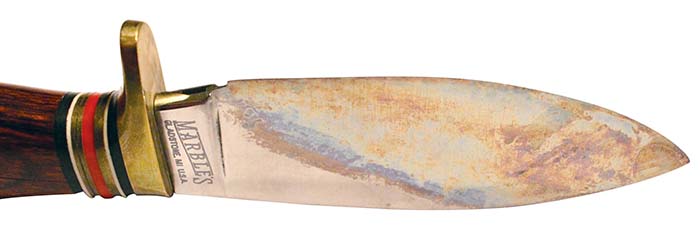
As a guide to material selection, please allow us to make some rudimentary suggestions. Buy stainless or high grade tool steel for a pocket carry knife. Pocket carry knives will endure prolonged exposed to sweat and moisture. They need to be very corrosion resistant. Buy tool or carbon steel for a fighting knife. A weapon of this type may come to bear against an armed and determined foe. It needs to be imminently strong and sharp. Buy carbon or stainless steel for a hunting knife- just keep your carbon steel and tool steel blades clean and dry. If oxidation and corrosion can be kept at bay, you’ll appreciate the performance advantages carbon and tool steels afford over stainless. If attention cannot be given to blade maintenance, pick stainless. And if you choose stainless, carry sharpening equipment.
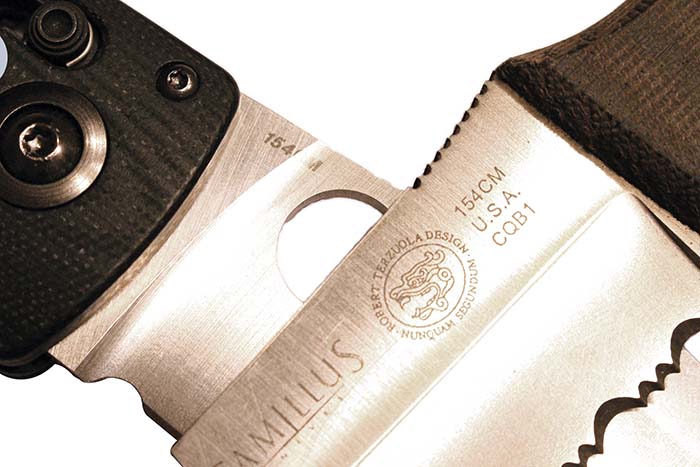
Another qualifying criteria- one that’s impossible to quantify in a graph would be value for cost. This is largely dependent on the brand of a knife, the steel of the blade, the sort of exotic materials included, and in the case of a handmade custom, the rarity or exclusivity attributed by the artist. Some brands sell quality. Some sell value. Some brands offer rare works of art that appreciate in value and mystique. Some brands sell pure hype and the promise that you will garner envy from your knife-collecting friends.. When studying the graphs, note that some steels may excel in one criterion, but lack in the other two (like 420 SS). These steels tend to be more economical, or suited to one application (420 makes a perfect fillet knife). Other steels that happen to hold their relative position in all three graphs (even if they’re in the middle), can be counted on to be great value for money (VG10, S30V, ATS34, 154CM). The rare few that hold their places at the high-end of hardness and edge retention (S90V, ZDP189, M390) can be expected to appear in pocket knives costing upwards of $400. At the very high end, many knife collectors will give up some corrosion resistance to get supreme cutting performance. One can care for a knife to prevent rust- but by will alone; one cannot make a blade tougher or last longer. It is demonstrably truer in knives than in most retail sectors; indeed, you stand a good chance of getting what you paid for. So it is with steel selection.
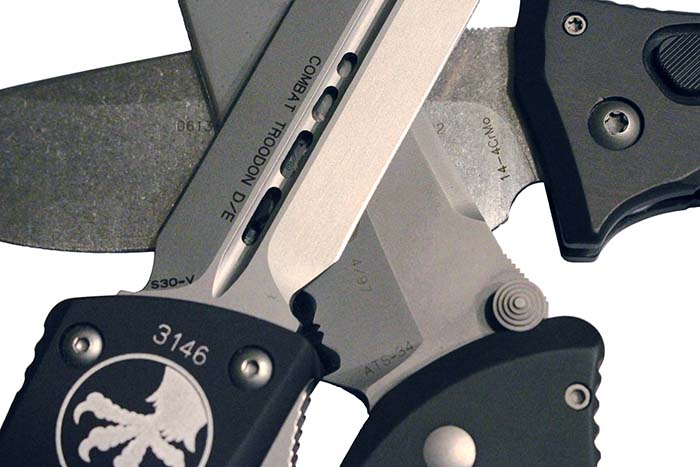

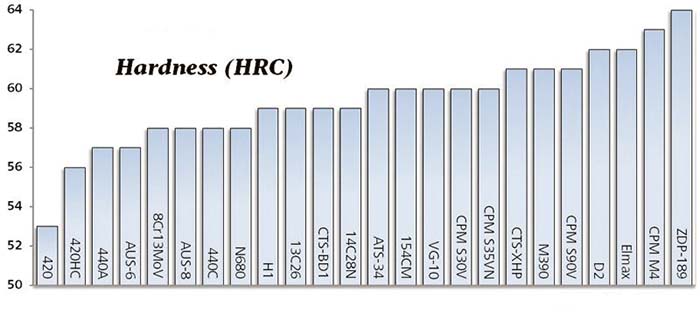
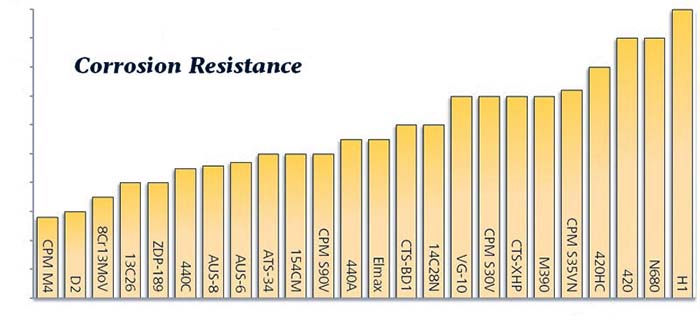
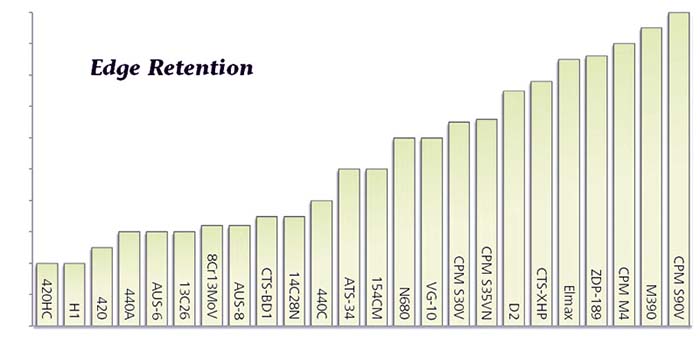
We thank Matt Davidson for his contribution to this issue and encourage our readers to visit his website: www.bestpocketknifetoday.com
| This article first appeared in Small Arms Review V20N5 (June 2016) |











